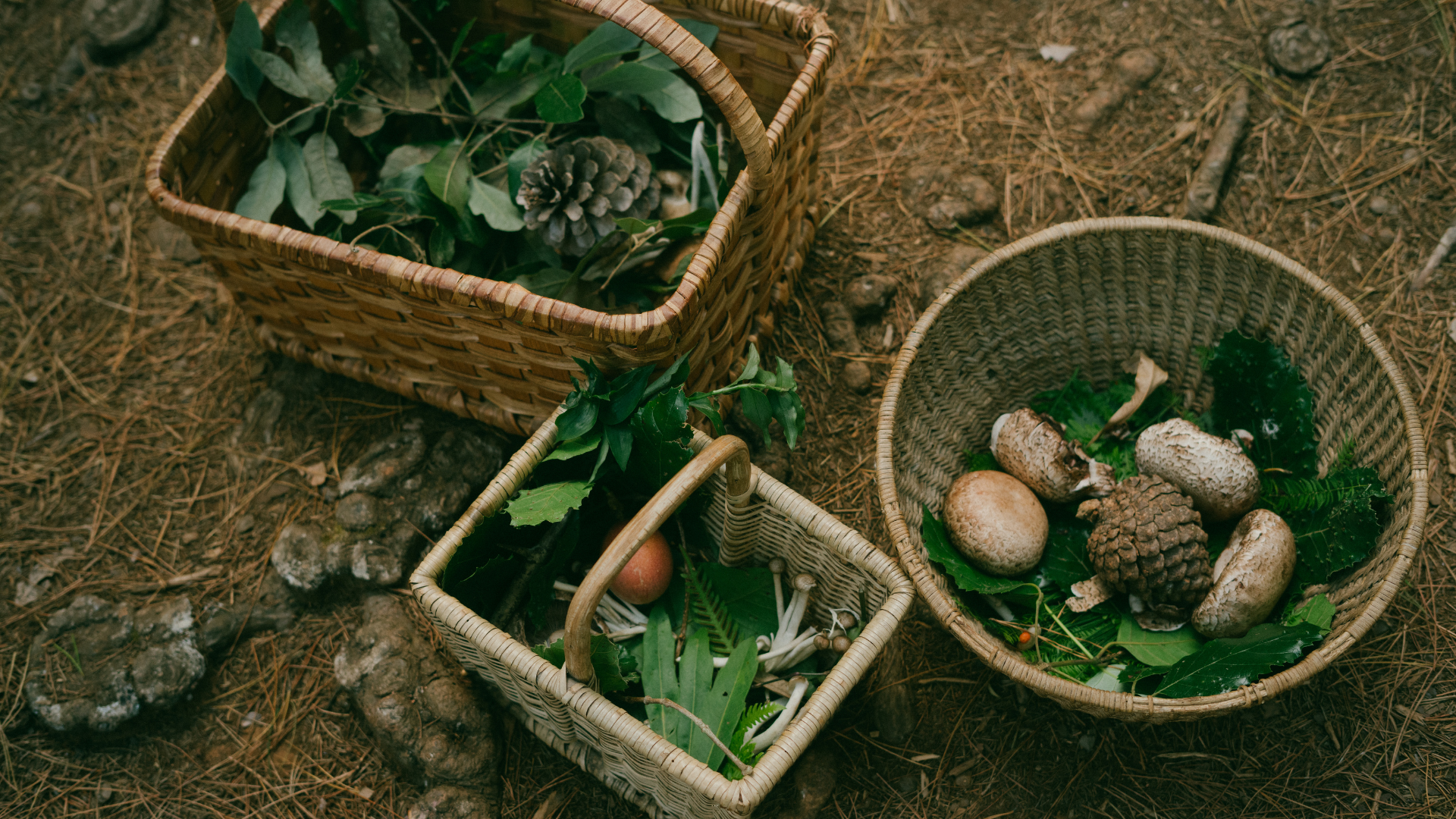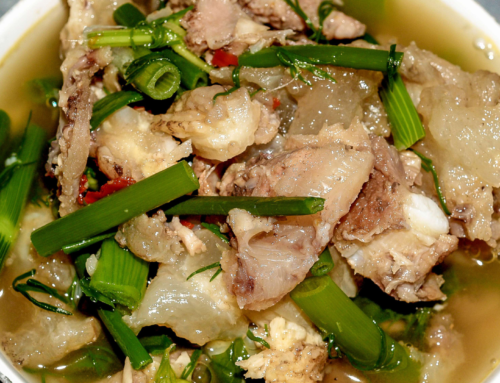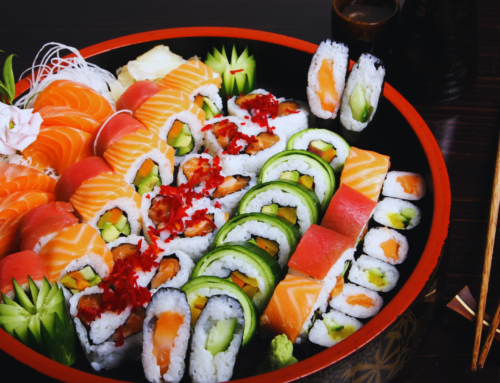Foraging for food connects individuals to nature and provides an opportunity to discover tasty, often overlooked ingredients. To forage successfully, one must learn to identify edible plants, mushrooms, and other natural resources while ensuring they avoid harmful species. Basic knowledge of local flora, seasonal availability, and ethical harvesting practices is essential for a rewarding foraging experience.
Understanding the benefits of foraging goes beyond taste; it fosters a sustainable lifestyle and a deeper appreciation for the environment. With the right guidance, foragers can cultivate confidence in their abilities and expand their culinary horizons using wild foods. Resources like field guides, local workshops, and community groups can enhance skills and knowledge.
As they embark on this adventure, foragers enrich their diets and connect with nature in a meaningful way. Equipped with the right information, anyone can discover the abundance that lies just beyond their doorstep.
Understanding Foraging
Foraging for food requires a commitment to ethical practices, a strong awareness of the legal landscape, and a focus on safety. These aspects ensure that foragers can enjoy their pursuits while respecting nature and their well-being.
Ethics and Sustainability
Foraging should be undertaken concerning nature and local ecosystems. This includes avoiding overharvesting, which can deplete resources and harm habitats. Foragers should aim to leave no trace by minimizing their impact on sites. This means taking care to avoid damaging plants or disturbing wildlife. Choosing to forage in areas that are abundant in certain species helps maintain balance. Foragers should also consider participating in community programs that promote sustainable foraging practices.
Legal Considerations
Foragers must be aware of the laws governing the collection of wild plants and fungi. Many areas have specific regulations that dictate where and what can be foraged. Common rules include restrictions on foraging in protected parks or private property without permission. Fines can be imposed for violations, making it essential for foragers to research local laws. Knowledge of regulations not only protects foragers but also helps conserve native species. To avoid legal issues, they should familiarize themselves with state and local foraging guidelines.
Foraging Safety
Safety is a priority when foraging for wild foods. First, it is crucial to accurately identify plants before consumption, as many edible varieties have toxic look-alikes. Using field guides or mobile apps can assist in identification.
Additionally, foragers should be aware of potential contaminants in their foraging locations. Areas near roads or industrial sites may have polluted soil and air, which can affect the safety of foraged items. Keeping first aid supplies handy is also recommended. This ensures that foragers are prepared for reactions to unfamiliar plants or injuries sustained during outdoor foraging.
Preparing for Foraging
Preparation is essential for a successful foraging experience. Having the right tools, planning the trip carefully, and understanding seasonal opportunities will enhance the foraging process.
Essential Tools and Equipment
Foraging requires specific tools to ensure safety and efficiency. Essentials include:
- Basket or Bag: To collect foraged items, opt for breathable containers made from natural materials. This prevents moisture buildup.
- Field Guide: A reliable plant identification guide helps distinguish edible plants from toxic ones. Choose one with clear images and descriptions.
- Knife or Scissors: Useful for harvesting plants cleanly without damaging them. A small, sharp knife or pair of scissors works best.
- Gloves: Protect hands from thorns and other irritating plants. Quality gardening gloves provide both protection and dexterity.
- Water and Snacks: Staying hydrated and energized is vital, especially during longer excursions.
Planning Your Foraging Trip
Effective planning increases the chance of a successful forage. Important considerations include:
- Location Research: Identify local areas known for edible plants. Parks, forests, and nature reserves are often rich in biodiversity.
- Weather Conditions: Check the forecast in advance. Optimal weather helps with plant identification and comfort while foraging.
- Time of Day: Early morning or late afternoon typically offers the best foraging conditions. Plants are often more vibrant and easier to identify during these times.
- Local Regulations: Understand laws regarding foraging in specific locations. Some areas have restrictions to protect native ecosystems.
Foraging Seasons and Timing
Understanding seasonal availability is crucial for successful foraging. Different plants thrive at various times of the year.
- Spring: Many wild edible greens and herbs emerge. Look for dandelions, ramps, and young nettles.
- Summer: Berries, such as blueberries and blackberries, are plentiful. This is also a good time for mushrooms but identify them carefully.
- Fall: Harvesting nuts like acorns and chestnuts is common. Root vegetables and late-season fruits also become available.
- Winter: Foraging slows but not entirely stops. Some hardy greens, like kale, may still be found. Look for other survival foods like pine needles for vitamin C.
Being aware of these factors helps maximize the foraging experience.
Identifying Edible Plants
Recognizing edible plants involves understanding key characteristics in various parts of the plant. This section outlines important identification techniques based on leaves, stems, fruits, seeds, roots, and tubers.
Leaf and Stem Identification
Leaves can vary dramatically in shape, size, and texture. For identifying edible plants, characteristics such as shape (broad, needle-like, etc.), margins (smooth, serrated), and arrangement (opposite, alternate) are crucial.
Common Edible Leaves:
- Dandelion: Broad, jagged leaves with a prominent vein.
- Clover: Round leaflets, often with a white “V” shape.
Stems can also inform identification. Characteristics such as thickness, color, and texture matter. For instance, wild asparagus has slender, hollow stems, whereas stinging nettle has square stems with fine hairs. Caution is important, as some plants may have toxic look-alikes.
Fruit and Seed Identification
Fruits and seeds present a variety of forms. Identifying these can be straightforward when considering color, size, and structure.
Edible Fruits to Know:
- Blackberries: Clustered dark purple fruit with a sweet flavor.
- Elderberries: Small, round berries that are dark purple and often used in syrups.
Seeds can also help in plant identification. For instance, pumpkin seeds differ from cherry pits. Knowing which seeds are safe to consume is vital, as some seeds can be toxic.
Roots and Tubers Identification
Roots and tubers serve as energy reserves, and many are nutritious. Identifying them includes observing size, texture, and growth habits.
Common Edible Roots:
- Carrot: Long, tapered root with a rough, orange exterior.
- Beet: Round, bulbous root with a deep red hue.
Potatoes and other tubers grow underground and have distinct features. Jerusalem artichokes look like ginger but are knobby and have a sweet flavor. Caution should be exercised, as the wrong identification can lead to illness. Always reference reliable guides when foraging.
Finding Food in Various Ecosystems
Ecosystems offer diverse foraging opportunities, each requiring specific knowledge and techniques. Understanding the unique characteristics of each environment aids in identifying edible plants and fungi, as well as sources of protein.
Forest Foraging
In forest environments, foragers can find a variety of edible plants, mushrooms, and nuts. Commonly foraged items include:
- Berries: Blueberries, raspberries, and blackberries grow abundantly in many forests.
- Mushrooms: Species like chanterelles and morels are sought after. However, accurate identification is crucial to avoid toxic varieties.
- Nuts: Acorns and hickory nuts provide essential fats and proteins.
When foraging, it’s important to consider the season. Spring brings tender greens, while fall is a good time for mushrooms and nuts. Always remember to follow local laws regarding foraging and sustainability practices.
Coastal Foraging
Coastal ecosystems offer a mix of plant and marine life. Foraging here may include:
- Seaweeds: Nori, dulse, and kelp are nutritious and can be used in various dishes.
- Shellfish: Clams, mussels, and oysters can be found among rocks and tides. Checking regulations before harvesting is vital.
- Edible Plants: Beach strawberries and salty marsh herbs like samphire grow in these areas.
Awareness of tide schedules and seasons will yield the best foraging results. It’s also important to avoid areas contaminated by pollutants.
Urban Foraging
Urban environments provide unique foraging opportunities, often overlooked by many. Key sources include:
- Wild Edibles: Dandelion greens and purslane thrive in city parks and gardens. They offer nutritional benefits and are often underappreciated.
- Fruit Trees: Many neighborhoods have fruit-bearing trees. Residents can often harvest from public areas with permission from property owners.
- Herbs: Common herbs like mint and thyme can often be found in abandoned lots or community gardens.
Foragers in urban settings should be aware of local regulations and avoid areas treated with pesticides. Connecting with local foraging groups can provide valuable insights into safe and sustainable practices.
Harvesting Techniques
Understanding the appropriate harvesting techniques is essential for sustainable foraging. Utilizing careful collection methods and responsible habitat management ensures that foragers can enjoy the benefits of wild foods while preserving the environment.
Careful Collection
Foragers should prioritize the method of collection to prevent damaging the ecosystem. When harvesting plants, tools like knives or scissors are recommended. This allows for clean cuts that minimize stress on the plant.
When collecting wild edibles, it is vital to take only what is needed. A good rule of thumb is to harvest no more than one-third of a given plant population. This helps promote regeneration and maintains the plant’s health. Additionally, foragers should be mindful of the surrounding wildlife. Avoid large disturbances in the area, as animals rely on these habitats for food and shelter.
Responsible Habitat Management
Responsible habitat management involves observing the environment and adhering to local guidelines. Foragers should be familiar with the rules governing wild harvesting in their area, like seasonal restrictions or protected species. Promoting biodiversity is key. Foragers can support this by rotating harvest locations. This prevents pressure on a single area and aids in the ecosystem’s recovery.
Regularly assessing the health of harvested plants is essential. If a population appears diminished or unhealthy, it is wise to refrain from future harvesting in that area. Respecting the habitat ensures that wild food remains abundant for future foragers.
Processing and Storing Foraged Food
Proper processing and storage are crucial steps after foraging to ensure the safety and longevity of the collected food. This involves cleaning and preparing the food appropriately, as well as employing various preservation methods.
Cleaning and Preparation
Cleaning foraged food is essential to remove dirt, insects, and potential contaminants. Begin by rinsing fruits, vegetables, and herbs under cool running water. For leafy greens, submerge them in a bowl of water, swishing gently to dislodge any grit.
Once cleaned, it is important to examine the food for spoilage. Discard any damaged or wilted parts. Depending on the type of foraged item, preparation can vary. For example, mushrooms may require peeling or slicing. Always use clean and sharp tools to ensure cleanliness and maintain quality.
Preservation Methods
Several methods can effectively preserve foraged food. Common techniques include drying, freezing, pickling, and fermenting.
- Drying: This method removes moisture, hindering bacterial growth. Dehydrate herbs in a low-heat setting or utilize a food dehydrator.
- Freezing: Ideal for fruits and soft vegetables, freezing retains most nutrients. Blanch vegetables briefly before freezing to preserve color and texture.
- Pickling: This involves immersing food in a vinegar solution. It adds flavor and increases shelf life.
- Fermenting: This method encourages beneficial bacteria to thrive, enhancing flavor and nutrition.
Each technique has its requirements and can significantly affect the final taste and durability of the foraged food.
Cooking with Foraged Foods
Utilizing foraged foods in cooking opens a range of flavors and textures. Approaching recipe adaptation and flavor pairings can elevate dishes while ensuring a delightful culinary experience.
Recipe Adaptation
Foraging offers unique ingredients that require adjustments in traditional recipes. Acorns or wild mushrooms can replace nuts or store-bought fungi in various dishes.
When adapting recipes, consider the cooking time and method. Some foraged items, like dandelion greens, may need blanching to reduce bitterness. Conversely, delicate herbs, such as wild garlic, enhance flavor when added towards the end of cooking. Creating a basic framework is essential. For example, a stir-fry can effortlessly include foraged greens alongside seasonal vegetables. Emphasizing freshness will highlight the foraged flavors.
Pairing Flavors
Flavor pairing is crucial when incorporating foraged foods. Similar to conventional ingredients, foraged items have specific taste profiles that can either complement or clash with other foods. Balancing flavors can create harmony in dishes. For instance, pairing tangy wild berries with rich, fatty meats can provide a contrast that enhances both elements. Additionally, consider textures. Crunchy wild nuts can add an interesting layer to creamy soups. Utilizing herbs like chickweed or lemon balm can refresh a dish, brightening heavier ingredients. It is essential to experiment and note successful combinations for future reference.
Advancing Your Foraging Skills
Improving foraging skills requires dedication to acquiring knowledge and engaging with others who share a similar interest. Building expertise in plant identification and learning from experienced foragers can greatly enhance the foraging experience.
Developing Plant Knowledge
Knowledge of local flora is essential for safe and successful foraging. Foragers should start by studying field guides specific to their region, focusing on edible plants. Utilizing apps that identify plants through images can also be beneficial. Before foraging, it is crucial to learn about plants that might have toxic look-alikes. Creating a checklist of common local plants, including their characteristics, habitats, and seasons of availability can aid memory.
For instance, consider these edible plants and key details:
| Plant Name | Identifying Features | Edible Parts |
| Dandelion | Yellow flowers, jagged leaves | Leaves, flower |
| Cattail | Tall, reed-like plant | Young shoots, rhizomes |
| Chickweed | Small white flowers, opposite leaves | Leaves, stems |
Community and Sharing
Joining a local foraging group can significantly enhance knowledge and skills. Engaging with others provides opportunities for shared experiences, tips, and safety practices. Workshops or guided foraging walks led by experienced foragers can be invaluable. Participants have the chance to learn important identification skills and proper harvesting techniques firsthand.
Social media platforms and local forums can also be effective places for foragers to exchange advice, post findings, or ask questions about specific plants. Building a network fosters support and encourages safe foraging practices. Sharing foraged items with friends or community members can promote further exploration and enjoyment of the bounty available in nature.





Leave A Comment